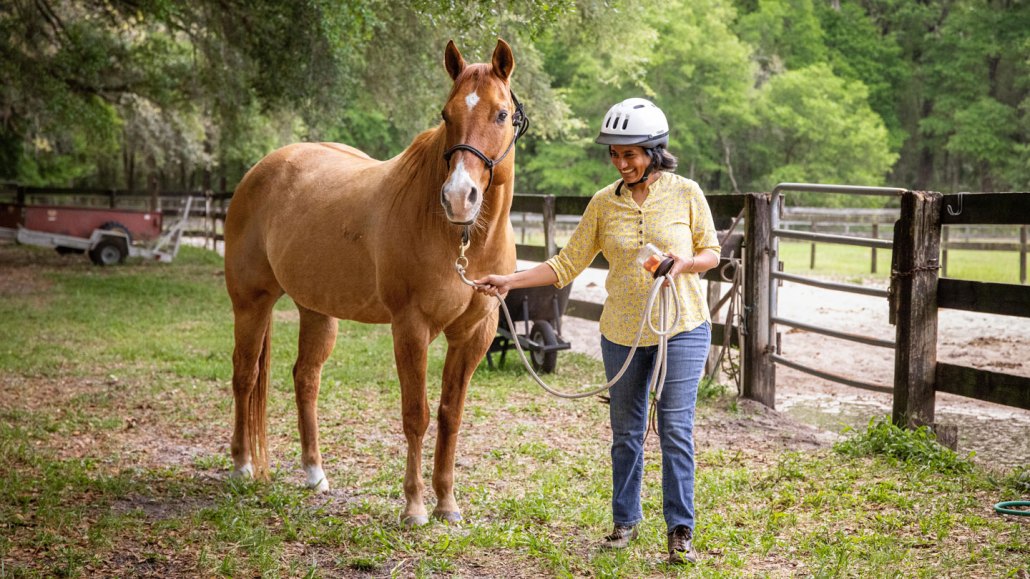How understanding horses could inspire more trustworthy robots
Robots fill roles once held by horses, so equine-inspired robots might work well with humans

University of Florida computer scientist and roboticist Eakta Jain has studied and learned to ride horses to understand how their behavior with humans could inspire robots with a similar type of respect and trust.
Brianne Lehan/University of Florida